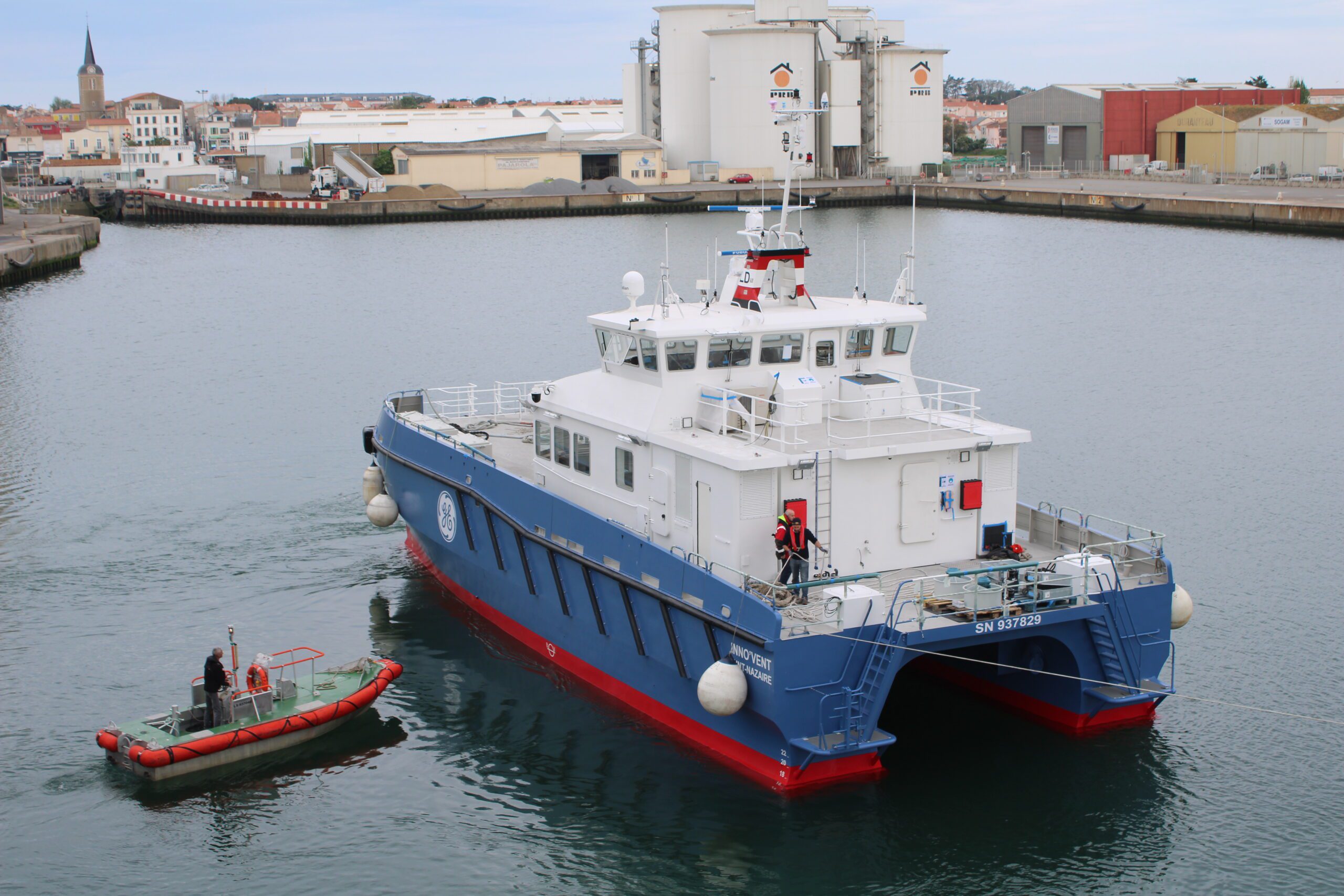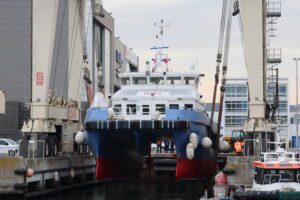
29 April 2022
Saint-Nazaire offshore wind farm: Launch of the first CTV designed and built in France
At a time when EDF Renewables and GE Renewable Energy have announced the installation of the first offshore wind turbines on the Saint-Nazaire offshore wind farm, LD Armateurs and Tidal Transit are pleased to announce the launch of the first Crew Transfer Vessel (CTV) dedicated to the operations and maintenance of the wind farm.
On Thursday, April 28, 2022, the launch of the vessel was attended by representatives of the French shipyard OCEA, GE Renewable Energy, EDF Renouvelables and LD Armateurs.
As a reminder, in December 2020, GE Renewable Energy (GE) selected LD Armateurs and Tidal Transit for two CTVs for the Saint-Nazaire offshore wind farm. Construction of the two CTVs began in 2021 for a planned commissioning in summer 2022.
This order, along with the one of EDF Renewables, has enabled the structuring and development of an essential part of the French maritime sector dedicated to Marine Renewable Energies. Indeed, two other industrial partnerships have been formed with French companies for the design and construction of these vessels. The innovative design was carried out by MAURIC, a naval architecture firm based in Nantes, and the construction was carried out by the French shipyard OCEA, a leader in the design, construction and maintenance of aluminum vessels, whose production sites are based in France.
The CTVs, the first to be entirely designed and built in France, will sail under the French flag (first register) and will have the mission of transferring technicians and their equipment between the coast and the wind farm for the maintenance of the turbines. These vessels are equipped with batteries, which allows them to operate in hybrid mode, and are equipped with a foil to limit their fuel consumption and their environmental footprint.
With 80 GE Haliade 150-6MW wind turbines, the Saint-Nazaire wind farm will have an installed capacity of 480 MW and will supply the equivalent of the consumption of 700,000 people.


